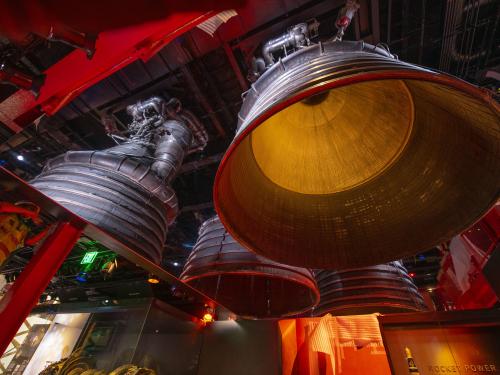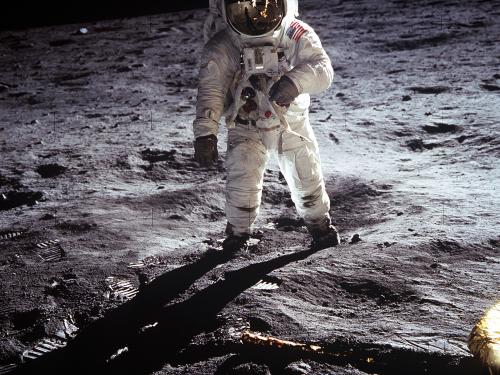
Stories of daring, stories of technological feats, stories of prevailing against the odds ... these are the stories we tell at the National Air and Space Museum. Dive in to the stories below to discover, learn, and be inspired.
Showing 21 - 30 of 91

November 14, 2022
Although the Artemis I mission won’t have any astronauts riding along, there are other items on board to commemorate the occasion and conduct science to further the Artemis program and other research projects.

November 02, 2022
The Rocketdyne F-1 engines powered the first stage of the Saturn V rocket that launched the Apollo lunar missions. The Air and Space Museum’s redesigned F-1 installation offers a new perspective on the most powerful liquid-fuel rocket engine in U.S. history.

September 22, 2022
Are you a lover of all things lunar? Here are three hidden gems from the Destination Moon exhibit you won’t want to miss.

July 14, 2022
It’s been nearly 50 years (!) since humans last walked on the Moon. But NASA’s upcoming Artemis missions will soon return astronauts to the lunar surface. Artemis isn’t just about going back – it’s about science! So to answer all of our burning questions about what Artemis astronauts will do, where they will go, and what makes this all different from Apollo, we spoke to the Artemis science lead, Dr. Sarah Noble.

February 23, 2022
Stephanie Wilson is now one of 18 members of the Artemis astronaut team, a group of nine men and nine women from diverse backgrounds. Since NASA has announced its intent to send the first woman and the first person of color to the Moon, she is a strong candidate.

November 12, 2021
The Apollo missions contributed more than putting humans on the Moon, it also produced a lot of new scientific data and discoveries which expanded our knowledge of both the Moon itself and our Solar System. Here are ten of our top Apollo discoveries.

November 09, 2021
The Apollo program, which landed the first human on the Moon, ended in December 1972 with Apollo 17. Why did we stop?

November 09, 2021
Between 1969 and 1972, twelve astronauts successfully landed on the Moon and returned to Earth, bringing back with them lunar samples and scientific data, and, perhaps most importantly, a new understanding of what it meant to be human. But what did they leave behind?

November 05, 2021
President Kennedy's decision to land men on the Moon before 1970 required the quickest, most efficient method possible. Three landing schemes were proposed.

November 05, 2021
President Kennedy's decision to land men on the Moon before 1970 required the quickest, most efficient method possible. At the center of the United States success was an integral component of landing men on the Moon: the Moon rocket.